Sony RX10 II setup, tips, and tricks
Introduction
The Sony DSC-RX10 II is the best bridge camera currently available. It features a unique 1″ type stacked 20MP CMOS sensor, 4K video recording, and improved readout speed thanks to a new DRAM chip. The body design and lens specs remain in line with the RX10, including a Zeiss-branded 24-200mm equivalent F2.8 lens.
Other new features include a 40x super slow motion video mode at 960fps, an Anti-Distortion Shutter mode up to 1/32,000sec and a new 2.35 million dot XGA OLED viewfinder. Continuous shooting is boosted to 14 fps. As in the RX10, Wi-Fi and NFC are also built-in.
Although this is a relatively easy camera to use, it is still very customizable, and this might seem daunting at first. No worries, I’ve assembled a guide to the most important functions of the Sony DSC-RX10 M2, including some tips and tricks. First things fist: setting up your camera for your use and getting to know the MENU system.
Diving into the MENU system
When you switch on your camera, you’ll be asked to enter a date, time, and timezone. This setting is necessary, as all images captured will have a timestamp, making it easy to find your beloved pictures in the future.
After this is setup, press the MENU button. You’ll see a range of icons and pages.
We’ll start at page 1 of the camera Icon (this menu is called camera settings).
(MENU → Camera Settings → page 1)
Image size:
Large, medium or small is selectable (when you set Quality to jpeg). Set it to large for optimal quality, if SD card space is an issue, you can set it to Small.
Aspect ratio:
You can choose 3:2 (which uses the full sensor surface) or 16:9 (crop but a more broad view). Leave as is at 3:2, you can always crop your pictures later.
Quality:
Do you edit your pictures on your desktop? If so, set to RAW or RAW jpeg. A RAW file saves all information the camera pixels register during shooting and will make for better quality images if you want to edit in something like Adobe Lightroom.
A jpeg is a compressed image (available in FINE (larger) and STANDARD (smaller, less quality) which takes up less space on your SD card but is less suited for editing afterward. Jpeg images will also have in-camera noise reduction applied, something you might or might not want to take care of yourself later, depending on your use.
Image Size (Dual Rec)
Quality (Dual Rec)
Selects the quality of still images to be shot while recording movies. Extra Fine, Fine or Standard are selectable. With the low prices of SD cards on the market, and the relatively small size of Jpeg images, it is best to go for the highest quality Extra Fine setting.
(MENU → Camera Settings → page 2)
File Format (video)
XAVC S records high-definition movies such as 4K by converting them to MP4 movies using the MPEG-4 AVC/H.264 codec. MPEG-4 AVC/H.264 is capable of compressing images at higher efficiency. You can record high-quality images while reducing the amount of data.
The following Movie formats are available with the RX10 M2:
- XAVC S 4K: Records high-definition movies in XAVC S 4K. This format supports a higher bit rate. Audio is recorded in the LPCM format. Bit-rate is approx. 100 Mbps or approx. 60 Mbps Records movies in 4K resolution (3840×2160).
- XAVC S HD: Records high-definition movies in XAVC S HD. This format supports a higher bit rate. Audio is recorded in the LPCM format. Bit-rate is approx. 100 Mbps, Approx. 60 Mbps, or Approx. 50 Mbps Records a more vivid movie compared to AVCHD with increased amounts of information.
- AVCHD: Records HD movies in AVCHD format. This file format is suitable for high-definition TV. Audio is recorded in the Dolby Digital format. Bit-rate is approx. 28 Mbps (Maximum), Approx. 24 Mbps (Maximum) or Approx. 17 Mbps (Average) The AVCHD format has a high degree of compatibility with storage devices other than computers.
Notes:
- In order to record movies with File Format set to XAVC S 4K, an SDXC memory card with a capacity of 64 GB or more (SD Speed Class 10) is needed.
- Display] is temporarily set Off when File Format is set to XAVC S 4K . Images will not appear on the monitor when you record movies while the camera is connected to an HDMI device when set to XAVC S 4K.
- Smile/Face Detect and Center Lock-on AF are temporarily set to Off when the camera is connected to an HDMI device when set to XAVC S 4K.
- Even if the camera is connected to an HDMI device, images will not be displayed on that device while movie recording is in progress.
- When File Forma is set to AVCHD, the file size of movies is limited to approx. 2 GB. If the movie file size reaches approx. 2 GB during recording, a new movie file will be created automatically.
- When File Format is set to MP4, the file size of movies is limited to approx. 4 GB. If the movie file size reaches approx. 4 GB during recording, recording will stop automatically.
Record Setting
This setting selects the image size, frame rate, and image quality for movie recording. The higher the bitrate, the higher the image quality.
File Format is set to XAVC S 4K or HD
The camera records high-definition movies by converting them to MP4 file format using the MPEG-4 AVC/H.264 codec.
File Format is set to AVCHD
- 60i/50i: Movies are recorded at approximately 60 frames/sec (for 1080 60i-compatible devices) or 50 frames/sec (for 1080 50i-compatible devices), in interlaced mode, with Dolby Digital audio, in AVCHD format.
- 24p/25p: Movies are recorded at approximately 24 frames/sec (for 1080 60i-compatible devices) or 25 frames/sec (for 1080 50i-compatible devices), in progressive mode, with Dolby Digital audio, in AVCHD format.
- 60p/50p: Movies are recorded at approximately 60 frames/sec (for 1080 60i-compatible devices) or 50 frames/sec (for 1080 50i-compatible devices), in progressive mode, with Dolby Digital audio, in AVCHD format.
When File Format is set to MP4
Movies shot are recorded in MPEG-4 format, at approximately 60 frames/sec (for 1080 60i compatible devices), approximately 50 frames/sec (for 1080 50i-compatible devices), approximately 30 frames/sec (for 1080 60i-compatible devices) or approximately 25 frames/sec (for 1080 50i-compatible devices), in progressive mode, with AAC audio, MP4 format.
Record Setting Menu options
File Format is set to XAVC S 4K
- 30p 100M/25p 100M: Records movies in 3840 × 2160 (30p/25p). Bit-rate: Approx. 100 Mbps.
- 30p 60M/25p 60M: Records movies in 3840 × 2160 (30p/25p). Bit-rate: Approx. 60 Mbps.
- 24p 100M: Records movies in 3840 × 2160 (24p). This produces a cinema-like atmosphere. Bit-rate: Approx. 100 Mbps.
- 24p 60M*: Records movies in 3840 × 2160 (24p). This produces a cinema-like atmosphere. Bit-rate: Approx. 60 Mbps.
File Format is set to XAVC S HD
- 60p 50M/50p 50M: Records movies in 1920 × 1080 (60p/50p). Bit-rate: Approx. 50 Mbps
- 30p 50M/25p 50M: Records movies in 1920 × 1080 (30p/25p). Bit-rate: Approx. 50 Mbps
- 24p 50M: Records the movies in 1920 × 1080 (24p). This produces a cinema-like atmosphere. Bit-rate: Approx. 50 Mbps
- 120p 100M/100p 100M: Records 1920 × 1080 (120p/100p) size movies at a high speed. Movies can be recorded at 120 fps/100 fps.
- 120p 60M/100p 60M: Records 1920 × 1080 (120p/100p) size movies at a high speed. Movies can be recorded at 120 fps/100 fps.
File Format is set to AVCHD
- 60i 24M(FX) and 50i 24M(FX): Records movies in 1920 × 1080 (60i/50i). Max Bit-rate: 24 Mbps.
- 60i 17M(FH) and 50i 17M(FH): Records movies in 1920 × 1080 (60i/50i). Bit-rate: Averages Approx. 17 Mbps.
- 60p 28M(PS) and 50p 28M(PS): Records movies in 1920 × 1080 (60p/50p). Max Bit-rate: 28 Mbps.
- 24p 24M(FX) and 25p 24M(FX): Records movies in 1920 × 1080 (24p/25p). Max Bit-rate24 Mbps.
- 24p 17M(FH) and 25p 17M(FH): Records movies in 1920 × 1080 (24p/25p).
Tip: use 24 or 25p for a cinema-like atmosphere.
File Format is set to MP4
- 1920×1080 60p 28M/1920×1080 50p 28M: Records the movies in 1920×1080 (60p/50p). Bit-rate: Approx. average 28 Mbps.
- 1920×1080 30p 16M/1920×1080 25p 16M: Records the movies in 1920×1080 (30p/25p). Bit-rate: Approx. average 16 Mbps.
- 1280×720 30p 6M/1280×720 25p 6M: Records small file size movies in 1280×720 (30p/25p). Bit-rate: Approx. average 6 Mbps.
Note: 120p and 100p cannot be selected when in Intelligent Auto, Superior Auto orScene Selection.
Dual Video Rec
Dual Video Rec actually allows you to Allows you to simultaneously record an XAVC S movie and an MP4 movie, or an AVCHD movie and an MP4 movie. Settings are either ON or OFF.
You can also capture still images while recording movies without stopping. Simply start recording with the Movie button, and press the shutter to take still images. The message Capture will appear on the screen. You can select the image size and quality of the stills in the Quality Dual Rec Menu.
HFR settings
You can select 4 different exposure mode for High Frame Rate (HFR) shooting based on the subject and effect you want. Program Auto, Aperture Priority, Shutter Priority or Manual Exposure are available.
Panorama Size
(when in panorama shooting mode) Size is selectable between standard and wide. Wide means your picture will cover a larger area. Set it to standard, having to scan an even broader area when making panoramas will take some experience with the camera to do efficiently.
Panorama Direction
A panorama picture (only available in jpeg) is a composite of several images stitched together. When in this mode, you’ll see an arrow that guides you in what direction and speed you should pan the camera to take the sequential images that will be stitched together. You can choose the path in this menu (either, up, down, left or right).
(MENU → Camera Settings → page 3)
Drive Mode
Drive Mode depicts the what action the camera will take when pressing the shutter. Keep in mind that when you’re Scene Selection or Sports Action mode, Single Shooting can not be engaged.
These are the available modes:
Single Shooting
Shoots a single still image when pressing the shutter button.
Cont. Shooting
Shoots images continuously while you press and hold down the shutter button. Continuous Shooting Mode is available when you’re in Speed Panorama, Scene Selection, Auto HDR and Smile shutter.
Spd Priority Cont.
Shoots images continuously at high speed while you press and hold down the shutter button. In Speed Priority Continuous, the focus is fixed when you half-press the shutter button. However, the exposure value is adjusted for each image. By getting AEL w/ shutter in the Menu OFF, this exposure adjustment per frame is disabled.
Self-timer
Self Timer shoots an image using the self-timer after a designated number of seconds have elapsed since the shutter button was pressed. Can be set to either 2, 5 or 10 seconds.
Self-timer(Cont)
Shoots a designated number of images using the self-timer after a designated number of seconds have elapsed since the shutter button was pressed.
You have a choice between:
- 10-second timer and three consecutive images.
- 10-second timer with five consecutive images.
- 5-second timer with three consecutive images.
- 5-second timer with five consecutive images.
- 2-second timer with three consecutive images.
- 2-second timer with five consecutive images.
Cont. Bracket
Shoots images while holding the shutter button down, each with different degrees of brightness. The last shot in the series is the one shown on the screen. When the flash is used, the product performs flash bracket shooting, which shifts the amount of flash light even if Cont. Bracket is selected. Bracket shooting is unavailable in Intelligent Auto, Superior Auto, Scene Selection, or Sweep Panorama. When ISO AUTO is chosen in Manual Exposure mode, the exposure is changed by adjusting the ISO value. If a setting other than ISO AUTO is selected, the exposure is changed by changing the shutter speed.
You can choose between:
- 3 consecutive images with an exposure value shifted by plus or minus 0.3 EV
- 5 consecutive images with an exposure value shifted by plus or minus 0.3 EV
- 9 consecutive images with an exposure value shifted by plus or minus 0.3 EV
- 3 consecutive images with an exposure value shifted by plus or minus 0.7 EV
- 5 consecutive images with an exposure value shifted by plus or minus 0.7 EV
- 9 consecutive images with an exposure value shifted by plus or minus 0.7 EV
- 3 consecutive images with an exposure value shifted by plus or minus 1.0 EV
- 5 consecutive images with an exposure value shifted by plus or minus 1.0 EV
- 9 consecutive images with an exposure value shifted by plus or minus 1.0 EV
- 3 consecutive images with an exposure value shifted by plus or minus 2.0 EV
- 5 consecutive images with an exposure value shifted by plus or minus 2.0 EV
- 3 consecutive images with an exposure value shifted by plus or minus 3.0 EV
- 5 consecutive images with an exposure value shifted by plus or minus 3.0 EV
Single Bracket
Shoots a specified number of images, one by one, each with a different degree of brightness.
Same choices as Cont. Bracket. The difference is that the sequence will fire only once here.
WB bracket
Shoots a total of three images, each with different color tones according to the selected settings for white balance, color temperature and color filter.
- White Balance Bracket: Lo records a series of three images with small changes in the white balance.
- White Balance Bracket: Hi records a series of three images with significant changes in the white balance.
DRO Bracket
Shoots a total of three images, each at a different degree of D-Range Optimizer.
- DRO Bracket: Lo records a series of three images with small changes in the D-Range Optimizer value.
- DRO Bracket: Hi records a series of three images with significant changes in the D-Range Optimizer value.
Bracket Settings
You can set the self-timer in bracket shooting mode, and the shooting order for exposure bracketing and white balance bracketing in these settings.
- Self Timer during Brkt: Sets whether to use the self-timer during bracket shooting. Also establishes the number of seconds until the shutter is released if using the self-timer.
- Bracket order: Sets the order of exposure bracketing and white balance bracketing.
Flash Mode
Different flash techniques can create some unique and interesting images. The default setting depends on the shooting mode, and some shooting modes don’t have all flash modes available. Another limitation is that the Wireless option cannot be used with the internal flash.
These are the Flash modes available on the RX10 II:
- Flash Off: The flash does not operate.
- Autoflash: The Flash works in dark environments or when shooting towards bright light.
- Fill-flash: The flash works every time you trigger the shutter.
- Slow Sync.: The flash works every time you trigger the shutter. Slow sync shooting allows you to shoot a clear image of both the subject and the background by slowing the shutter speed.
- Rear Sync.: The flash works right before the exposure is completed every time you trigger the shutter. Rear sync shooting allows you to shoot a natural image of the trail of a moving subject such as a moving car or a walking person.
- Wireless: When using a wireless flash, the shading effect provides a more 3D appearance to a subject than when using an attached flash. This mode is effective when you attach a remote control-compatible external flash to the camera, and shoot with a wireless flash (sold separately), placed away from the camera.
Flash Compensation
Flash compensation changes the amount of flash light only. If you use Exposure compensation, this will changes both the amount of flash light along with the change of the shutter speed and aperture. Flash Compensation does not work when the shooting mode is set to Intelligent Auto, Superior Auto, [Sweep Panorama or Scene Selection.
Red Eye Reduction
Set either ON or OFF. When enabled, the flash will pre-fire once or twice to reduce the commonly know red-eye problem in photos.
(MENU → Camera Settings → page 4)
Focus Area
The settings here apply to both Still Image Shooting and Movies. The different Focus Modes are one of the most significant tweaks one can do. The factory settings of a camera always intend to cover a broad range of shooting styles, but you’ll often find that a few tweaks here and there can iprove performance greatly for your particular style of shooting.
The following modes are available:
- Wide: Focuses automatically on a subject in all ranges of the image. Wide uses all available on-sensor Phase and contrast detect points. It’s useful for a broad variety of shooting styles, but might not always focus on exactly what you want. When you press the shutter button halfway down in still image shooting mode, a green square is displayed around the area that is in focus.
- Center: Focuses automatically on a subject in the center of the picture. It’s the most fundamental Focus area mode, and on a recent Sony Camera, it’s better to use the more advanced Expand Flexible spot.
- Flexible Spot: Allows you to move the AF range frame to the desired point on the screen and focus on an extremely small subject in a narrow area.
- Expand Flexible Spot: If the product fails to focus on the single selected point, it uses the focus points around the flexible spot as the second priority area to achieve focus.
- Lock-on AF: When the shutter button is pressed and held halfway down, the product tracks the subject within the selected autofocus area. Point the cursor to Lock-on AF on the Focus Area setting screen, then select the desired tracking start area using the left/right sides of the control wheel. You can move the tracking start area to the desired point by designating the area to be the flexible spot or expand flexible spot. Only selectable when in Continuous AF mode.
AF Illuminator
Only used in Still Shooting. The AF illuminator supplies a red beam of light to focus more easily on a subject in low light situations. The red AF illuminator allows the product to focus quickly when the shutter button is pressed halfway, until the focus is locked. Set to Auto (On) or Off.
You cannot use AF illuminator in movie mode, in Sweep Panorama, when Focus Mode is set to Cont. AF, or when Scene Selection is in Landscape, Sport, or Night Scene.
Exposure Comp
You can adjust the exposure in a range of –3.0EV to 3.0EV when the exposure compensation dial is set to zero. Based on the exposure value set by auto exposure, you can make the entire image brighter or darker (i.e. for Low Key Photography) if you adjust Exposure Compensation.
For Movies, you can adjust the exposure in a range of –2.0 EV to 2.0 EV.
When the exposure compensation dial is set to other than “0,” settings for the exposure compensation dial will be prioritized. For example, if you set Exposure Comp. to 3.0EV, but the exposure compensation dial is configured to 2.0EV, the “ 2.0EV” setting will be prioritized.
When you use Manual Exposure, you can compensate for the exposure only when ISO is set to ISO AUTO.
ISO Auto
Sensitivity to light is expressed by the ISO number. The larger the number, the higher the sensitivity. You can change the automatically set ISO sensitivity range for the ISO AUTO mode. Select ISO AUTO and press the right side of the control wheel, and set the desired values for ISO AUTO Maximum and ISO AUTO Minimum.
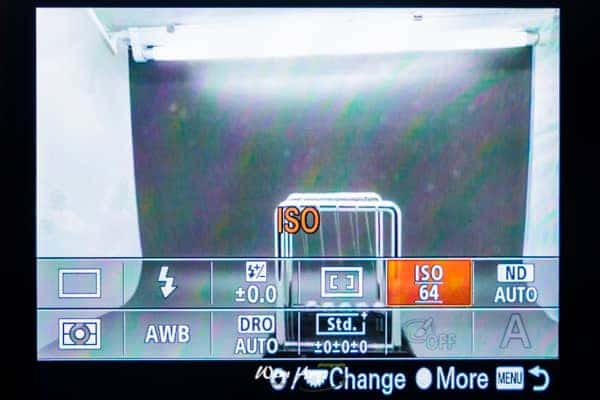
ISO settings are also available through the Fn button and Menu. A Quick way of changing many of the most used camera settings.
ISO Auto Min. SS
This is another important setting if you want to get the most out of your camera. If you select ISO AUTO when the shooting mode is P (Program Auto) or A (Aperture Priority), you can set the shutter speed at which the ISO sensitivity starts changing. This function is very practical for shooting moving subjects. You can minimize subject blurring while also preventing camera shake.
Available settings:
- FASTER (Faster)/FAST (Fast): The ISO sensitivity will start to change at shutter speeds faster than the Standard setting so that you can prevent camera shake and subject blurring.
- STD (Standard): The camera automatically sets the shutter speed based on the focal length of the lens.
- SLOW (Slow)/SLOWER (Slower): The ISO sensitivity will start to change at shutter speeds slower than the Standard setting, so you can shoot images with less noise.
- 1/32000―30″: The ISO sensitivity begins to change at the shutter speed you have set.
The difference in shutter speed at which ISO sensitivity starts to change between Faster, Fast, Standard, Slow, and Slower is 1 EV. Remember that when using a flash, this setting might not function as set.
(MENU → Camera Settings → page 5)
ND Filter
The Sony RX10 II has a built-in ND filter that reduces lit hitting the sensor by about three stops. You can slow down the shutter speed and decrease the aperture value for a better exposure. Also ideal for shooting at large apertures in bright daylight (for a better subject-background separation) or for special effects like cloud streaks, milky waterfalls, and misty seascapes.
Settings available are:
- Auto: Automatically turns on the ND filter based on the shooting mode and brightness.
- On: Always uses the electronic ND Filter.
- Off: Disables the ND Filter.
Metering Mode
Metering mode refers to the way the camera reads the light and sets the exposure.
In multi, it considers the whole frame and sets exposure according to internal algorithms programmed in camera.
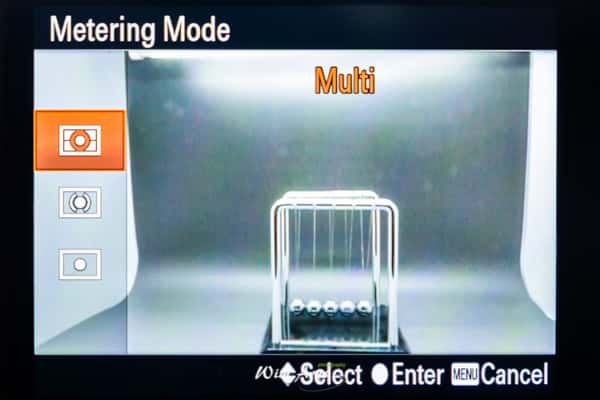
Multi metering mode
In spot or center, the camera only considers what is in that spot or the center (per example, if your subject is completely black, the camera will try to compensate by overexposing the image).
White Balance
You can either set the white balance to Auto, where the camera tries to guess what the neutral grey value is, use one of the preset white balance settings for different lighting conditions or customise the white balance according to your preference or using a grey card.
DRO/Auto HDR
DRO:
This stands for Dynamic range optimize and analyzes the contrast of your scene in real-time. It produces an image with optimal brightness and recovered shadow detail. You can use this function even while the subject is moving or during the continuous shooting.
Auto HDR:
(not available for RAW captures) This feature shoots 3 images with different exposures and then overlays the bright area of the under exposed image and the dark area of the over exposed image to create an image with an extended range from highlight to shadow.
The highlight detail in auto HDR is better than that in DRO and with reduced noise. The shutter is released three times, so using this function for moving subjects is not recommended.
Creative Style
The Sony creative styles can best be explained as being film emulations (as it some other camera manufacturers implement this). There are a range of styles available from vivid colour to black and white. If you’re shooting RAW, these styles are embedded, but can always be zeroed after importing them to you RAW editor of choice. Jpegs are saved with this styling applied. It is always useful to try some of these, and can be a real bost for your creativity, as you will notice that you make different images in say black-and-white as opposed to colour.
Picture Effect
Think of this menu as an Instagram app right in your camera, with all kinds of retro filters and effects. These are only available when quality is set to Jpeg (Not in RAW).
(MENU → Camera Settings → page 6)
Picture Profile
Picture Profile is a menu for adjusting and changing parameters that determine an image’s characteristics. There are many parameters that can be adjusted, but they can be grouped into four types:
Parameters for selecting basic contrast and color tone.
The basic contrast and coloring are defined by the combination of [Gamma] (gamma curve) and [Color Mode] (color characteristics) settings.
Gamma
| Movie | Standard gamma curve for video |
| Still | Standard gamma curve for still images |
| Cine1 | Softens the contrast in darker image areas and emphasizes gradation changes in lighter image areas, producing a subdued tone overall (equivalent to HG4609G33) |
| Cine2 | Similar results to [Cine1] but optimized for editing with up to 100% video signal (equivalent to HG4600G30) |
| ITU709 | ITU709 gamma curve (low-light gain of 4.5) |
| ITU709 (800%) | Gamma curve for checking scenes recorded using [S-Log2] |
| S-Log2 | Gamma curve for [S-Log2]. This setting is selected when some grading work will be performed after recording. |
Color Mode
| Movie | Color tones for [Movie] gamma curve |
| Still | Color tones for [Still] gamma curve |
| Cinema | Color tones for [Cine1] gamma curve |
| Pro | Color tones similar to standard Sony broadcast camera image quality (used in combination with [ITU709] gamma curve) |
| ITU709 Matrix | ITU709 color tones (used in conjunction with [ITU709] gamma curve) |
| Black & White | Sets the saturation to 0 for recording in black and white |
| S-Gamut | Setting based on the assumption that some grading work will be performed after recording. Used when [Gamma] is set to [S-Log2].
|
Parameters for adjusting gradation (darkness-brightness tone)
Black Level
This function adjusts the black level of the image.
| Parameters | Settings |
|---|---|
| Black Level | –15 to 15 |
As an image effect, you can emphasize the color black to create an image that gives a powerful impression, or you can weaken black to give the image a soft impression. Shifting Black Level in the minus direction emphasizes the black color in the image while changing the level in the plus direction weakens the black color.
If you want to simulate an old film or capture winter morning fog, the black level value should be increased. If you decrease the value, gradations in dark areas will be smoothed out, making the areas appear in crisp black.
When using multiple fixed cameras to shoot the same subject from different angles, the balance between subject and background often varies. This balance variation may cause the black color in the subject to appear different when cameras are switched. However, this is an optical illusion. If it occurs, you can correct it by adjusting Black Level to make the black color look the same.
Black Gamma
This function lets you alter the shape of the selected gamma curve and adjust gradations in dark image areas.
| Parameters | Settings |
|---|---|
| Black Gamma > Range | Wide / Middle / Narrow |
| Black Gamma > Level | –7 to 7 |
[Range] controls the luminance range that Black Gamma influences. The [Narrow] setting keeps the field close to black while the [Wide] setting extends the range to gray. [Range] should be set narrower when you want to control the quality of dark areas. If you wish to adjust the overall image tone, [Range] should be set wider. At first, it may be a good idea to start from the [Narrow] setting.
Increasing the [Level] value brightens the image, whereas decreasing the value makes the image darker. For example, if you set [Range] to [Narrow] and reduce the [Level] value, you can create an image with dark areas that are similar to the ones seen in films. Unlike Black Level, Black Gamma Level adjusts luminance subtly.
Knee
This function sets the knee point and slope for video signal compression to prevent over-exposure by limiting signals in high-intensity areas of the subject to the dynamic range of your camera.
First, select whether to set the knee point and slope automatically or manually in [Mode], and then adjust each setting.
| Parameters | Settings |
|---|---|
| Knee > Mode | Auto / Manual |
| Knee > Auto Set > Max Point | 90% to 100% |
| Knee > Auto Set > Sensitivity | High / Mid / Low |
| Knee > Manual Set > Point | 75% to 105% |
| Knee > Manual Set > Slope | –5 to 5 |
![]()
Mode
- Auto:
- Automatically adjusts the knee based on what is selected in the following configuration (when [Movie] or [ITU709] is selected in [Gamma]).
- [Max Point] determines the maximum knee point level (white level). The knee slope is automatically adjusted according to the Max Point setting. The standard is to keep it at 100%. A lower setting will turn white grayish while a higher setting will discard gradations in high luminance areas.
- [Sensitivity] changes the luminance level at which the knee’s automatic adjustment starts. When set to [Low], the knee’s automatic adjustment starts at lower input signal levels than normal. When set to [High], the knee’s automatic adjustment starts at higher input signal levels than normal.
- When a parameter other than [Movie] or [ITU709] is selected in [Gamma], the gamma curve will not exceed the White clip point and over-exposure rarely occurs. When [Mode] is set to [Auto] with these settings, the Knee function is disabled. If you want to enable the Knee function, set [Mode] to [Manual].
- Manual:
- Sticks to settings based on the following selections.
- [Point] establishes the position of the knee point output level.
- [Slope] determines the inclination of the knee slope.
A negative slope setting results in a gentler knee slope angle. This expands the dynamic range but reduces the ability to produce rich gradations. A positive slope setting makes the knee slope inclination steeper. This shrinks the dynamic range but bolsters the capacity to express gradations. When [Slope] is set to 5, the Knee function is disabled. - Set [Point] and [Slope] in [Manual Set] in combination. If you select a higher setting for [Point] and a gentler setting for [Slope], you can obtain video-like sharp highlight effects. If softer film-like highlight effects are desired, select a lower setting for [Point] and a steeper setting for [Slope]. In practical terms, move [Point] and [Slope] up and down in opposite directions while checking the gradations in high luminance areas until you find the ideal settings.
Parameters for adjusting coloring
Saturation
This function adjusts the color saturation.
| Parameters | Settings |
|---|---|
| Saturation | –32 (fainter in color) to 32 (richer in color) |
A positive value results in more vivid colors while a negative value presents faded colors. Saturation must be adjusted in tandem with contrast. Bright and vivid settings produce video-like images while dark and vivid settings result in film-like images. The combination of bright and light creates pastel tones, whereas dark and light settings, create artistic finishes.
Color Phase
This function adjusts the color hue.
| Parameters | Settings |
|---|---|
| Color Phase | –7 (Greenish) to 7 (Reddish) |
As you rotate the color wheel to the left (decreasing the set value) or to the right (increasing the set value), the colors shift along the spectrum from red to yellow, green, cyan, blue, magenta and red. Because this affects all colors, it is difficult to make specific adjustments exactly as intended. Use this function when matching coloring closely between different cameras.
![]()
Color Depth
This function adjusts the luminance for each color phase. The luminance changes more drastically when the selected color is richer (higher saturation). It does not change much at all when the color is achromatic.
| Parameters | Settings |
|---|---|
| Color Depth > R | –7 to 7 |
| Color Depth > G | –7 to 7 |
| Color Depth > B | –7 to 7 |
| Color Depth > C | –7 to 7 |
| Color Depth > M | –7 to 7 |
| Color Depth > Y | –7 to 7 |
A higher set value lowers luminance while deepening the color. A lower set value increases luminance, making the color look paler.
This setting doesn’t only enhance the apparent vividness of colors, but also can express deep, dark colors.
Because each of the 6 colors — R (Red), G (Green), B (Blue), C (Cyan), M (Magenta), Y (Yellow) — can be adjusted individually, you can apply this function to just the colors you want to emphasize.
![]()
Parameters for highlighting image edges
This feature changes how much detail is applied to the subject’s image sides.
Because settings other than [Level] are quite complex, we recommend you start by adjusting only the [Level] setting first.
| Parameters | Settings |
|---|---|
| Detail > Level | –7 (Weak) to 7 (Strong) |
| Detail > Adjust > Mode | Auto / Manual |
| Detail > Adjust > V/H Balance | –2 (Stronger Vertical (V) detail) to 2 (Stronger Horizontal (H) detail) |
| Detail > Adjust > B/W Balance | Type1 (Higher proportion of black detail) to Type5 (Higher proportion of white detail) |
| Detail > Adjust > Limit | 0 (Strongly restricted) to 7 (No restriction) |
| Detail > Adjust > Crispening | 0 (No restriction) to 7 (Strongly restricted) |
| Detail > Adjust > Hi-Light Detail | 0 (Smaller detail amount) to 4 (Larger detail amount) |
Level
This function determines the strength of detail image processing to be applied.
- If you apply too much detail, the subject’s original atmosphere may be undermined, as its translucence may be lost or it may be given an unnatural luster. Excessive detail when shooting shiny leaves, for instance, may result in the leaves looking as if they are made of plastic. It is also advisable to apply detail only modestly when shooting paintings.
- Because Detail makes image edges wider, the original texture of a subject consisting of very fine lines may be lost if too much detail processing is applied. (Example: thin lace curtains)
- Also, be aware that Detail may fatten up the edges of noise particles that appear under a high gain setting, and may make such particles highly noticeable. In such cases, you can adjust the amount of detail processing on the noise particles by using the [Crispening] function.
- The image edges become more visible when viewed on large screens. It may be advisable to ease off on Detail if you plan to display the image on large TVs or screens.
Mode
If you want to make finer adjustments to detail, set [Mode] in [Adjust] to [Manual] and adjust the following settings.
V/H Balance
This function regulates the balance between Vertical (V) detail and Horizontal (H) detail. Vertical (V) feature boosts image edges by expanding them upward and downward. Horizontal (H) feature emphasizes image outlines by thickening them to the left and right.
- The results of detail processing may appear differently depending on the TV, computer display or another type of display monitor. Adjust [V/H Balance] as needed.
- To emphasize the impression of a subject that has many horizontal elements, such as a human face (with eyes and mouth), you can increase the proportion of Vertical (V) detail by lowering the setting (selecting a lower set value).
![]()
B/W Balance
This function changes the balance between the amount of black detail for low-luminance areas and the amount of white detail for high-luminance areas.
![]()
Limit
This feature restricts the amount of black detail for low-luminance areas and white detail for high-luminance areas by setting a maximum value. The maximum value cannot be set independently for black detail and white detail.
- [B/W Balance] and [Limit] adjust the amount of black detail and white detail added to image edges.
- Black detail adds the impressions of “power,” “hardness,” and “presence” to the subject. But it may bring undesirable effects because it emphasizes wrinkles and pores.
- The white detail gives the subject a “clean” and “glossy” impression. You can increase the proportion of white detail and reduce that of black detail when shooting jewelry and glass objects to heighten their clarity and translucence.
![]()
Crispening
This function reduces detail that accompanies visual noise to prevent noise from being emphasized.
You can use this function when you want to apply detail processing to the subject while keeping noise as unnoticeable as possible.
Hi-Light Detail
This function adjusts the detail level for bright subjects.
You can use this to emphasize the edges of a bright subject in front of a high-luminance background.
Picture Profile presets
Supporting a broad range of adjustable settings, this camera’s Picture Profile menu allows you to change a variety of settings, such as Gamma Curve, Color, and Detail. Up to 7 sets of setting combinations can be stored in the internal memory as PP1 through PP7.
Using Picture Profile presets
The RX10 II is equipped with several Picture Profile presets as a default setting. By using these presets, you can match the image texture with other types of cameras equipped with the [Picture Profile] function, or create a picture texture that is similar to that of cinematic film.
Difference from image processing using nonlinear video editing software
Picture Profile adjusts colors and the vividness of the picture during recording. You can make similar adjustments by using nonlinear editing software after shooting. But there are the following differences.
To fit massive amounts of image data in a limited memory capacity, this camera compresses image data when recording. No matter how advanced a compression format is, any data compression inevitably deteriorates image quality somewhat. Applying sharpness, gamma curve correction and other video effects to recorded images by using nonlinear editing software worsens the image condition further by processing already deteriorated images. For example, if video compression leaves the image with reduced contrast or block noise in some areas, applying video effects often make the problems more noticeable.
Because Picture Profile processes video signals before compressing, it changes the gamma curve and corrects colors before image quality is damaged by compression. This makes it possible to carry out highly precise image adjustments while keeping the quality of the subject intact. It should also be noted that recording images with proper contrast is crucial. If image contrast in dark and bright areas is not recorded correctly, this will result in underexposed dark and overexposed white areas with no gradations. This means you cannot change image contrast properly later on with nonlinear editing software no matter how hard you try because there will be no gradations to work with.
If you intend to process your video with nonlinear editing software later, it is important that you record your image in the right way.
Nonlinear editing software is a very powerful tool, but can’t fix everything. If you adjust various settings to make sure your video is recorded in a way that matches your ideal as much as possible, you will be able to create a video that will be closer to what you have in mind with minimal processing via nonlinear editing software. It will also keep rendering time short and make video editing work more efficient.
What to do with Picture Profile
If you are working on a project with ample time for editing or a short piece, record an image that is as flat as possible to allow for many different kinds of post-production image processing and color adjustments.
If you are working on a project with a tight deadline or a long piece, on the other hand, you can dramatically reduce the amount of post-production image processing and enable highly efficient production by recording the video as close to the vision of the finished image as possible. Showing the image being recorded to the director and crew as close to the tone of the ideal finished image as possible on a display monitor will significantly boost morale on the scene, which has a significant impact on the quality of the finished work. In order to avoid the problems with nonlinear editing described in the previous section, and also to create pieces with mobility that make the most of this camera’s unique characteristics, try to fully utilize Picture Profile while recording images at the proper settings.
Focus Magnifier
When focussing manually or in DMF mode, you can set the camera to magnify a part of the screen so you can check focus. This sub menu allows you to select the part of the image that will be magnified during shooting.
Long Exposure NR
Set if you want the processing engine to apply noise reduction for images captured with a long exposure time. Leave it ON.
High ISO NR
Here you can select the amount of noise reduction applied to images with high ISO settings (when quality is set to jpeg). As Sony has rather aggressive noise reduction, I would chance it to Low. (if not, you run the risk of getting paint-like, smeared images at higher ISO values)
Center Lock-on AF
This is a very powerful autofocus feature. When turned ON, it allows you to track a subject. In iAuto mode, you can access this feature (when turned ON and camera is set to AF) by pressing the Center button of the multi-controller. You’ll see a square on your screen, then center your desired tracking subject and the camera will continue to track it, even when it exits your frame and reappears.
Smile/Face Detect
This is another powerful feature. It can be set to automatically detect on focus on (registered) faces and enable a function called Smile Shutter. When the latter is enabled, the camera will automatically capture an image when a smile is detected.
(MENU → Camera Settings → page 7)
Auto Dual Rec
Sets whether or not to automatically shoot still images when shooting movies. Shoots when impressive compositions, including people, are detected. This function may also record versions of the automatically shot images that have been trimmed into optimal arrangements. When a trimmed image is recorded, both the image before trimming and the cut image will be recorded.
- Off: Auto Dual Rec is not performed.
- On: Shoot. Frequency Low/On: Shoot. Frequency Standard/On: Shoot. Frequency High: Auto Dual Rec is carried out with the specified shooting frequency.
The positions, orientation, expressions of faces are detected in order to shoot still images with the impressive compositions. If you want to change the size or quality of still images, use Quality (Dual Rec). Even when Auto Dual Rec is set to On, you can record still images by pressing the shutter button. Not that there might be a delay in pressing the shutter button and the image actually being taken if the processor is too busy.
Soft Skin Effect
If you’re using this camera mainly for pics of friends and family, this is an excellent feature, as it will soften and smooth skin tones make you and your beloved ones look their best. (only available when quality is set to Jpeg)
Auto Obj. Framing
When enabled, the Sony RX10 M2 will automatically crop your captured image to what it deems best. Meaning it will cut the picture for a nicer composition. Only available for Jpegs, though, a nice feature if you don’t want to bother too much with the technical side of photography.
Auto Mode
- Intelligent Auto: The camera shoots with automatic scene recognition. (RAW and JPEG)
- Superior Auto: The camera shoots with automatic scene recognition. This mode takes clear images of dark or backlit scenes. For low-lit or backlit scenes, if necessary the camera may shoot multiple images and create a composite image, etc., to record higher quality images than in Intelligent Auto mode. (only JPEG)
Scene Selection
This is more easily controlled via the right thumb wheel when you’re in SCN mode, but you can also select the presets for different scenes (like sports or portrait) from here.
The following scenes are available: Portrait, Infant, Night Portrait, Night Scene, Backlight Portrait, Backlight, Landscape, Macro, Spotlight and Low Light.
High Frame Rate
You can select the exposure mode for HFR shooting based on the subject and effect you want. These are available:
- Program Auto
- Aperture Priority
- Shutter Priority
- Manual Exposure
(MENU → Camera Settings → page 8)
(MENU → Camera Settings → page 9)
Audio Rec. Level
You can adjust the audio recording level while checking the level meter. Regardless of the [Audio Rec Level] settings, the limiter always operates. Audio Rec Level is available only when the shooting mode is set to Movie. The Audio Rec Level settings are applied for both the internal microphone and the Microphone terminal input.
: Turns up the audio recording level.
- −: Turns down the sound recording level.
Audio Out Timing
When using headphones, you can set echo cancelation while shooting.
- Live (default setting): Outputs audio without delay when recording movies. Select this setting when an audio deviation is a problem during sound monitoring.
- Lip Sync: Outputs video and audio in sync when recording movies. Select this setting to prevent undesirable variations between video and audio.
Wind Noise Reduct.
This helps reduce noise from the wind during video recording. Set to ON.
Memory Recall
Allows you to shoot an image after recalling often-used modes or camera settings registered in advance. Register shooting settings in advance by using the Memory function. If you set Memory recall after completing the shooting settings, the registered settings are given priority and the original settings may become invalid.
Memory
Allows you to register up to 3 often-used modes or product settings in the product. You can recall the settings using just the mode dial.
- Set the product to the setting you want to register.
- MENU → (Camera Settings) → [Memory] → desired number.
Items that can be registered:
- Shooting mode
- Shutter speed
- Camera Settings
- Optical zoom scale
To recall registered settings:
Set the mode dial to MR, then press the right/left side of the control wheel or turn the control wheel to select the desired memory number.
To change registered settings:
Amend the setting to the desired one and re-register the setting to the same mode number.
Movie
You can adjust the shutter speed or aperture value to your desired settings for recording movies. You can also check the image angle before shooting. When you adjust the aperture using the aperture ring while recording a movie, set the Aperture Click Switch to OFF. If you change the aperture value while shooting a movie with the Aperture Click Switch set to ON, the sound of the aperture ring will be recorded.
Settings:
- Program Auto: Allows you to shoot with the exposure adjusted automatically (both the shutter speed and the aperture value).
- Aperture Priority: Allows you to shoot after adjusting the aperture value manually.
- Shutter Priority: Allows you to shoot after adjusting the shutter speed manually.
- Manual Exposure: Allows you to shoot after adjusting the exposure (both the shutter speed and the aperture value) manually.
SteadyShot (stills)
Sets whether or not to use the SteadyShot function in still photography. The SteadyShot functionality will give you about two stops advantage, reducing camera shake.
SteadyShot (movie)
Sets whether or not to use the SteadyShot function while recording video. The SteadyShot functionality will give you about two stops advantage, reducing camera shake.
Color Space
You can choose between Standard and Adobe RGB. If you don’t know what this means, leave it to standard. If you do, you’ll probably set it to Adobe RGB since it has an extended color range (useful for post-processing).
Auto Slow Shutter
This function allows you to slow the shutter speed down to 1/30 of a second. When the Auto Slow Shutter feature is turned on, it helps in reducing the amount of video noise that is recorded when shooting in dark areas.
Audio Recording
Sets whether to record sounds when shooting movies. On records audio in stereo, Off does not record any sound.
(MENU → Custom settings (wheel) → page 1)
Zebra
The zebra function shows a zebra pattern on screen while shooting in any area that is in danger of highlight clipping. You can switch this OFF or anywhere in a range between 70 and 100.The Zebra Pattern is a highlight warning indicator that is common in video cameras. It does not control exposure but just warns you that your highlights are blown out. It is not recorded into the resulting image.I have it set halfway at around 75 and it is a very useful indication of correct exposure of the full image. As I capture in RAW, I am very careful not to have any highlight clipping, in order to be able to possibly fully recover highlights in Lightroom.
MF Assist
This works in conjunction with the Focus Magnifier on Page 5 of the camera settings. You might remember that you can select the area to magnify there when using manual focus (MF). MF assist will need to be turned ON if you want to use this feature.
Focus Magnif. Time
You can set how long to hold the magnified area during MF assist. 2 sec, 5 seconds or no limit. 2 seconds is how I have it set up.
Grid Line
Having a grid line on you screen is a helpful aide for the composition of your image.
The human brain is hard-wired to recognize the structure and most people find a well-composed image more eye-pleasing.
During the course of photography history, rules have been developed on how to best compose the different elements within a scene. Many landscapes you’ll see have the horizon run through the middle of the image for instance, but this is just composition at its simplest form. Many photographers with a broad understanding of these techniques go far beyond that.
A good starting point is using the in-camera grid to make your brain aware of the possibilities in composition.
The Rules of 3rds, Square and Diag square are available
Marker Display (video)
Sets whether or not to display markers set using Marker Settings on the monitor while shooting movies. Set to ON or OFF.
Marker Settings (video)
Sets the markers to be displayed while shooting movies.
Available markers:
- Center: Sets whether or not to show the center marker in the center of the shooting screen. Off / On.
- Aspect: Sets the aspect marker display. Off / 4:3 / 13:9 / 14:9 / 15:9 / 1.66:1 / 1.85:1 / 2.35:1.
- Safety Zone: Sets the safety zone display. This becomes the standard range that can be received by a general household TV. Off / 80% / 90%.
- Guideframe: Sets whether or not to display the guide frame. You can verify whether the subject is level or perpendicular to the ground.
(MENU → Custom settings (wheel) → page 2)
Audio Level Display
Sets whether to display the audio level on the screen. ON or OFF.
Auto Review
You can check the recorded image on the screen right after the shooting. You can also set the display time for Auto Review:
10 Sec/5 Sec/2 Sec: Displays the registered image on the screen right after shooting for the selected duration of time.
If you perform a magnifying operation during Auto Review, you can check that image using the magnified scale
DISP Button
Finder:
Allows you to set the screen display modes that can be selected for the viewfinder using Display Setting in shooting mode.
Menu Item Details:
- Graphic Display: Shows basic shooting information. Graphically shows the shutter speed and aperture value.
- Display All Info.: Shows recording information.
- No Disp. Info.: Does not show recording information.
- Histogram: Displays the luminance distribution graphically.
- Level: Indicates whether the product is level in both the horizontal and front-back directions. When the product is level in both directions, the indicator turns to green.
Peaking Level
Peaking Level is a manual focusing aid which works when you have your camera set to MF or DMF.
You’ll see a type of noise outlining the parts of your image where the focus lies, you can set the sensitivity to high, mid or low.
Which setting is best depends on what lens you use, as with a sharper lens it can be configured to low, while more soft lenses benefit from a medium or high setting to clearly visualise what you’re focusing on.
Monitor:
Allows you to set the screen display modes that can be selected for the monitor using (Display Setting) in shooting mode.
Menu Item Details:
- Graphic Display: Shows basic shooting information. Graphically shows the shutter speed and aperture value.
- Display All Info.: Shows recording information.
- No Disp. Info.: Does not show recording information.
- Histogram: Displays the luminance distribution graphically.
- Level: Indicates whether the product is level in both the horizontal and front-back directions. When the product is level in both directions, the indicator turns to green.
- For viewfinder: Displays information suited for shooting with the viewfinder.
Peaking Color
You can choose the color of this Peaking between Red, white and yellow. I have it set to red, as this contrasts nicely with most scenes you capture.
Exposure Set Guide
Sets the guide displayed when exposure settings are changed on the shooting screen. Nice tool when you’re getting to know the functionality of your new camera. If you’re familiar with Sony’s feature, turn it OFF.
(MENU → Custom settings (wheel) → page 3)
Live View Display
Live view display allows you to see the image you’re going to capture with the settings you have dialled in like aperture and shutter speed. Some users report easier auto-focussing in low-light when it’s turned OFF, and you’d need to turn it off when using external flashes too that can’t be used with Sony’s TTL (through the lens) functionality.
Pre-AF
When pre-AF is set to ON, the camera will continuously focus, even without half-pressing the shutter button. This can be draining to the battery, especially when using some lenses like the Zeiss Touit range. Set it to OFF.
Zoom Speed
Sets the zoom speed of the camera’s zoom lever (and the Sony remote). Experiment with what setting you like, either Slow or Fast.
Zoom Setting
The zoom feature of the product provides a higher magnification zoom by combining various zoom features. The icon displayed on the screen changes, according to the selected zoom feature. You cannot use the Smart Zoom function with movies.
- Optical zoom range: Images are magnified within the optical zoom range of this product.
- Smart Zoom range: Zoom images without causing the original quality to deteriorate by partially cropping an image.
- Clear Image Zoom range: Zoom images using an image process with less deterioration. Set Zoom Setting to On: ClearImage Zoom or On: Digital Zoom first.
- Digital Zoom range ( ) You can magnify images using an image process. When you select [On: Digital Zoom] for [Zoom Setting], you can use this zoom function.
(MENU → Custom settings (wheel) → page 4)
Finder/Monitor
This setting controls the method for switching the display between Electronic Viewfinder and the screen. You can also assign this function to your preferred key.
Settings:
- Auto: When you look into the Electronic Viewfinder, the display is switched to the Electronic Viewfinder automatically.
- Viewfinder(Manual): The screen is turned off and the image is displayed only in the Electronic Viewfinder.
- Monitor(Manual): The Electronic Viewfinder is turned off and the image is always displayed on the screen.
Release w/o Card
Sets whether the shutter can be released when no memory card has been inserted. Useful if you don’t want to get in the situation where you’re shooting without a card. Enable or Disable.
AEL w/shutter
Auto (default setting):
Fixes the exposure after adjusting the focus automatically when you press the shutter button halfway down when Focus Mode is set to Single-shot AF.
On:
Fixes the exposure when you press the shutter button halfway down.
Off:
Does not correct the exposure when you press the shutter button halfway down. Use this mode when you want to adjust focus and exposure separately.
Note: The camera keeps adjusting the exposure while shooting in Cont. Shooting or Spd Priority Cont. mode.
Note: Operation using the AEL button is prioritised over the AEL w/ shutter settings.
Shutter Type
You can set whether to shoot with a mechanical shutter or an electronic shutter.
Possible settings:
- Auto: The shutter type is automatically switched based on the shooting conditions and shutter speed.
- Mechanical Shut.: Shoot with the mechanical shutter only.
- Electronic Shut.: Shoot with the electronic shutter only.
The availability of flash shooting, shutter speed, and with or without shutter sound for each setting:
Mechanical Shutter:
- Flash
- Shutter speed: BULB to 1/3200 second
- Shutter sound: mechanical shutter sound and electronic shutter sound
Electronic Shutter:
- Flash
- Shutter speed: 30 seconds to 1/32000 second
- 2 Shutter sound: electronic shutter sound
Exp. Comp. Set
Selects if the Exposure compensation functionality ( -5 in 0.5EV or 0.3EV steps) also reduces flash power or not. Leave it to Ambient And Flash.
Reset EV Comp.
Sets whether to maintain the exposure value set using Exposure Comp. When you turn off the power when the exposure compensation dial position is set to “0”
Settings:
- Maintain: Maintains the settings of the Custom Settings.
- Reset: Resets the settings of Exposure Comp to zero.
(MENU → Custom settings (wheel) → page 5)
Face Registration
This is where you can register faces, it works only when face recogintion is set to ON (registered faces). This is an interesting functionality, as you can register faces of your subject (like at a wedding the bride and groom) and the camera will automatically detect these registered faces and give autofocus priority to them. You can register up to 8 faces (by taking a picture of them within this menu) and set a priority order.
Works well, and helps to get the right people in-focus in busy shots.
Write Date
Sets whether to record a shooting date on the still image. On or Off. The functions that can be assigned are displayed on the setup item selection screen
Function Menu Set
You can assign the functions to be called up when you press the Fn (Function) button.
Zoom Func. on Ring
Sets the zoom functions when using the manual ring to change zoom scales. The settings for [Zoom Func. on Ring] are valid only when auto-focusing/
Options:
- Standard: Zooms in/out smoothly when you operate the zoom by turning the manual ring.
- Quick: Zooms in/out to an angle of view corresponding to how far the manual ring has been rotated.
- Step: Zooms in/out at certain angle steps when you operate the zoom by turning the manual ring.
MOVIE Button
Sets whether or not to activate the MOVIE button.
Available settings:
- Always: Starts movie recording when you press the MOVIE button in any mode. (except when the mode dial is set to High Frame Rate).
- Movie Mode Only: Starts movie recording when you press the MOVIE button only if the shooting mode is set to Movie mode.
(MENU → Custom settings (wheel) → page 6)
Dial/Wheel Lock
You can set whether the dial and wheel will be locked by pressing and holding the Fn (Function) button. You can release the locked knob/control wheel by holding the Fn (Function) button down.
(MENU – Wireless functionality – page 1)
Send to Smartphone
- You can send one or several images directly to your wireless device (phone or tablet) by pressing this button.
- You can either descide to choose which images you want to transfer from the camera or on the wireless device (via the Sony PlayMemories app, avialable for free in the apple or android store).
- You’ll have to connect the camera via WiFi first (it makes a Wifi access point), using the instruction on the A5100 screen.
- It works just like connecting to any other access point with your phone or tablet.
- You should do this as quickly as possible, just to get it out of the way.
- When your phone has wirelessly connected to the camera once and you’ve entered the password, it will remember this, and make it a lot faster to connect later.
Send to computer
You’ll need to physically connect the computer with the camera using the supplied USB cable, and you can push selected pictures to your Sony PlayMemories desktop software (installed from the CD or downloaded from their website). This can even be set up to continue pushing images after the camera has turned off.
View on TV
If you have a Wifi-enabled TV, you can see images and slideshows directly from your camera through your home wireless network.
One-touch NFC
Enables Quick, one-touch connection (as opposed to first accessing the camera’s wireless network and then navigating to the Playmemories app) with NFC (near-field communication) capable devices.
I have not tried this (as my iPhone does not have NFC) but it looks a lot easier to use.
Airplane Mode
Disables all wireless functionality, just like airplane mode does on your phone.
(MENU – Wireless functionality – page 2)
WPS Push
If your access point has the WPS button, you can register the access point to the camera quickly by pushing the WPS button.
Access Point Set
Here you can setup an access point for your camera to the internet.
It enables the Sony ILCE-5100 to directly install PlayMemories apps from the internet. Works just like setting an access point (WiFi connection) on your phone.
Edit Device Name
If you wish, you can change the name of the Device Access point) perhaps to make it easier to identify which RX10 M2 is yours in certain situations.
Disp MAC Address
You can see the MAC address of the camera here, might be useful for some advanced configuration or troubleshooting
SSID/PW Reset
Reset the name and password of the wireless network the camera creates.
Reset Network Set.
Resets all network settings.
If something does not function properly, and you want to start from scratch, can be useful.
MENU – PlayMemories settings – page 1
Application List
You’ll find The Smart remote control camera app (wich allows you to use your phone as a remote control via PlayMemories phone app for iphone and Android) and the Playmemories camera app here.
You can access your online PlayMemories account here, or create an account (once you’ve set up your camera connection with your Wifi network).
You’ll also be able to download new apps available for purchase in the Sony Playmemories online app store like the Time-lapse and smooth reflection app.
If you do not want to connect your camera to the internet, you can always install new apps (and updates) if you connect the camera with your mac or PC with the supplied USB cable, using the Sony PlayMemories desktop application.
MENU – playback options – page 1
Delete
Delete on or multiple images stored on your SD card.
View Mode
select how the camera will arrange captured images in the viewing browser.
Image Index
Select whether you want the image browser to display 12 (larger) or 30 (smaller) images per page.
Display rotation
Select whether you want the camera to automatically rotate images when you rotate the camera or not.
Slide Show
Select whether you want the camera to repeat slideshows when all pictures are viewed or not, and choose the interval between slides.
Rotate
Change the orientation of images in-camera.
MENU – playback options – page 2
Enlarge
Select an image and enlarge a portion of that image. Useful for checking details and focus.
Protect
Protect images (selectable or per date) from accidentally being erased.
Motion Interval ADJ
You can also change the interval of the image tracking.
Specify Printing
Specify Printing is a feature that allows images to be marked for printing later. Registered images are displayed with the DPOF mark (DPOF stands for Digital Print Order Format).
MENU – Setup – page 1
Monitor Brightness
Manually set the Monitor brightness (recommended leave to zero) or change to a brighter setting for Sunny Weather.
Viewfinder Brightness
Set to Auto which adapts to the lighting circumstances or manually change to your preferred setting. There is a color and greyscale chart displayed on screen to allow you to set it up to your liking.
Finder Color Temp
Chang the color temperature of the viewfinder (colder-warmer) to you liking. I don’t change anything here.
Volume settings
Change the playbak volume for recorded videe or demo’s.
Audio Signals
You can turn off audio signals like the beep when te camera achieves focus. Useful if you want a more stealthy operation (although you’ll still hear the second curtain shutter).
MENU – Setup – page 2
Title Menu
choose between tiles or a tiled front page when accessing the MENU or a direct tab style menu layout.
Mode Dial Guide
Turn the description for each shooting mode ON or OFF. Can be handy at first for a novice user to get famiar with what the different shooting modes actually do
Delete Confirm
When deleting images on yoour SD card, you’ll have to confirm every deletion (to make sure you don’t accidentaly delete anything). You can turn Off this confirmation here if you wish.
Display Quality
You can change the display quality to High or Standard. (High uses more power).
Pwr Save Time
You can set time intervals to automatically switch to power save mode. To return to shooting mode, perform an operation such as pressing the shutter button halfway down. Either 30 Min, 5 Min, 2 Min, 1 Min or 10 Sec.
PAL/NTSC mode
change to either of this broadcasting standards according to which region of the world you live in.
MENU – Setup – page 3
Demo Mode
The Demo Mode function displays the movies recorded on the memory card automatically ( for in-store demonstration purposes), when the camera has not been operated for a certain time.
TC/UB settings
The time code (TC) and the user bit (UB) information can be recorded as data attached to movies.
Possible settings:
- TC/UB Disp. Setting: Sets the display for the counter, time code, and user bit.
- TC Preset: Sets the time code. UB Preset: Sets the user bit.
- TC Format: Sets the recording method for the time code.
- TC Run: Sets the count up format for the time code.
- TC Make: Sets the recording format for the time code on the recording medium.
- UB Time Rec: Sets whether or not to record the time as a user bit.
HDMI settings
The HDMI settings page has a few options available for HDMI output.
- HDMI Resolution: Auto (default setting), 2160p/1080p, 1080p, 1080i.
- CTRL FOR HDMI: ON or OFF (ON allows you to operate the camera’s playback functions with a Sony BRAVIA Sync TV remote control).
- HDMI Info. Display: ON displays the shooting information on you connected TV, OFF disables this.
- TC Output: Sets whether or not to layer the time code information on the output signal via the HDMI terminal when outputting the signal to other professional-use devices. This function layers the time code information on the HDMI output signal. The camera sends the time code information as digital data, not as an image displayed on the screen. The connected device can then refer to the digital data to recognize the time data.
- REC Control: If you connect the camera to an external recorder/player, you can remotely command the recorder/player to start/stop recording using the camera. ON or OFF.
4K output Sel
You can set how to record movies and perform HDMI output when your camera is connected to external recording/playback devices.
- Memory Card HDMI: Simultaneously outputs to the external recording/playback device and records on the camera’s memory card.
- HDMI Only(30p): Outputs a 4K movie in 30p to the external recording/playback device without recording on the camera’s memory card.
- HDMI Only(24p): Outputs a 4K movie in 24p to the external recording/playback device without recording on the camera’s memory card.
- HDMI Only(25p): Outputs a 4K movie in 25p to the external recording/playback device without recording on the camera’s memory card.
USB connection
Select what will happen when you connect your camera to your PC or MAC.
- Auto: Establishes a Mass Storage or MTP connection automatically, depending on the computer or other USB devices to be connected. Windows 7 or Windows 8 computers are connected in MTP, and their unique functions are enabled for use.
- Mass Storage: Establishes a Mass Storage connection between this product, a computer, and other USB devices.
- MTP: Establishes an MTP connection between this product, a computer, and other USB devices. Windows 7 or Windows 8 computers are connected in MTP, and their unique functions are enabled for use.
- PC Remote: Uses “Remote Camera Control” to control this product from the computer, including such functions as shooting and storing images on the computer.
USB LUN setting
Improves compatibility with external devices by limiting the functions of the USB connection.
Older devices that are not able to connect to the camera might work when set to single. Otherwise use Multi.
MENU – Setup – page 4
USB Power Supply
One of the most interesting features of this camera is the ability to charge the battery via USB. This works when connected to your computer by USB, but also with a USB car charger, or even a 20,000 Mah USB battery.
This menu item sets whether to supply power via the micro USB cable when the product is connected to a computer or a USB device.
Language
Selects the language to be used in the menu items, warnings, and messages.
Date/Time Setup
Sets the date and time.
- Daylight Savings: Selects Daylight Savings.
- Date/Time: Sets the date and time.
- Date Format: Selects the date and time display format
Area Setting
Sets the geographical area where you are using the camera.
Copyright Info
You can now write copyright information onto the still images. This information is then embedded into the EXIF data. You can write both photographer and copyright owner information.
MENU – Setup – page 5
Format
Format your SD card before use, this will erase any images still on the memory card.
File Number
Number your files according to the number of shots or resets it to start from 1.
Select REC folder
Selects where the camera will store newly captured images.
New Folder
Make a new folder for easily organising events and locations. When you insert a memory card that was used with other equipment into this product and shoot images, a new folder will be automatically created.
Folder name
Choose whether to have folder names in standard form (DSC) or create a new one by date. Setting folders by date will make organizing your images easier.
Recover Image DB
If you have a storage card error, you can try to rebuild the database in order to possibly retrieve lost images
MENU – Setup – page 6
Display media info
You can check how much space is left on your SD card (have pictures in your desired quality and how many minutes of video)
Version
Check what version of the operating system your camera and lens is running. Sony sporadically releases updates with new features, so it might be worth checking if any new firmware versions are available.
Setting Reset
Fully resets the camera to factory settings.
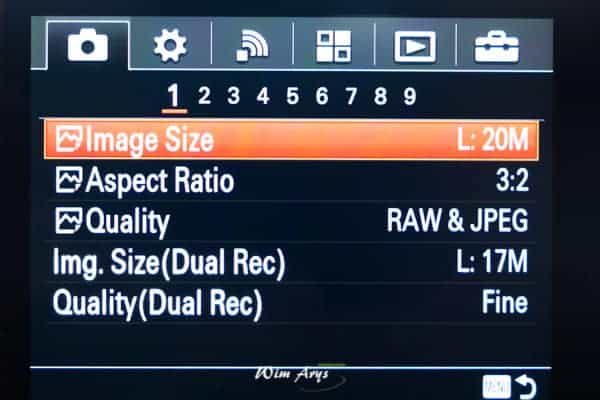
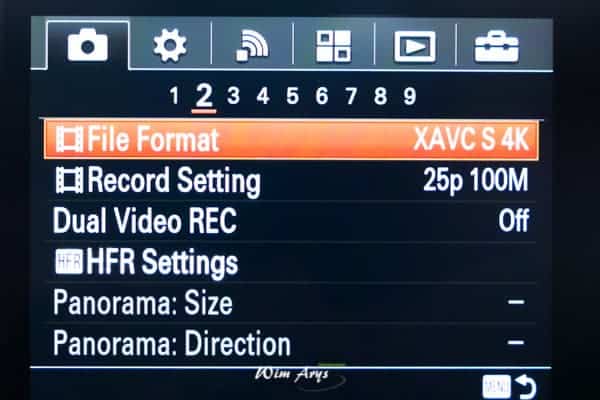
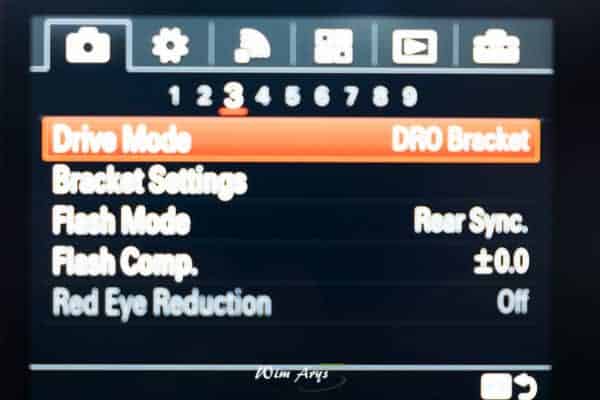
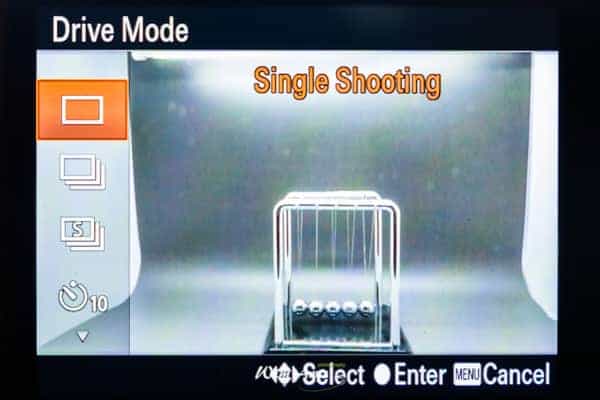
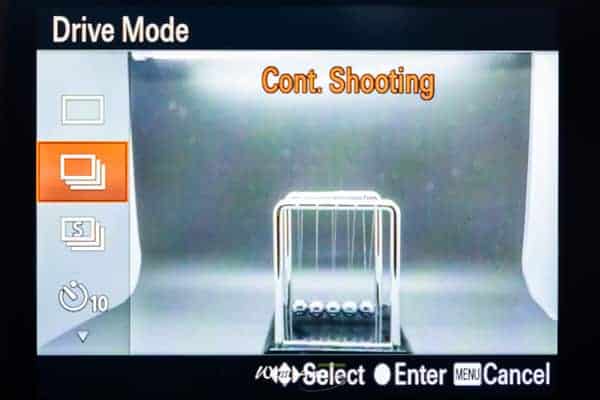
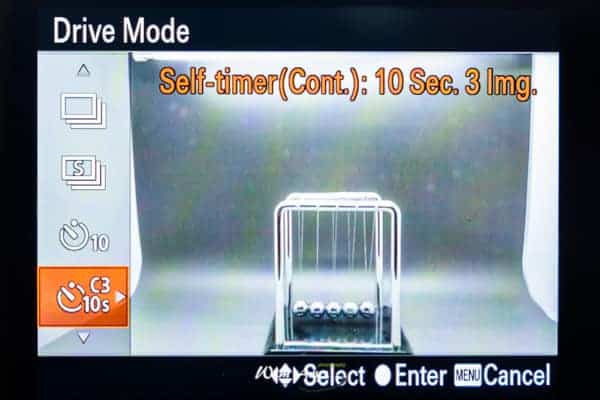
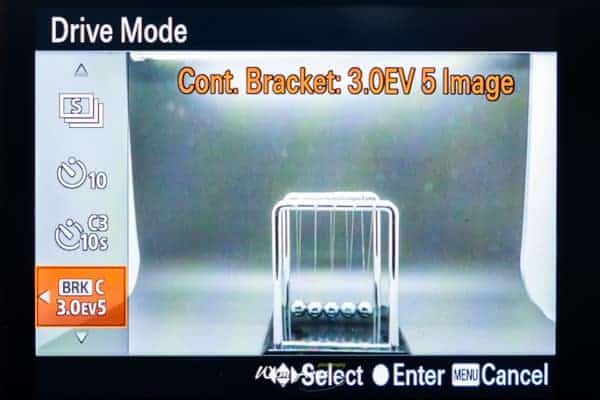
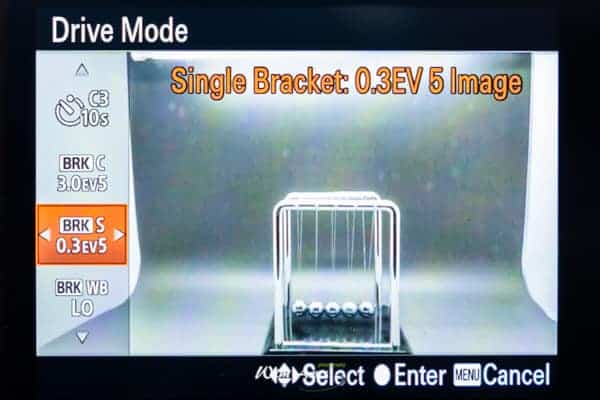
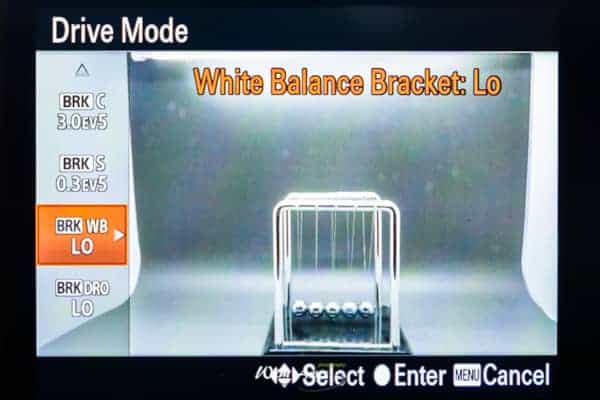
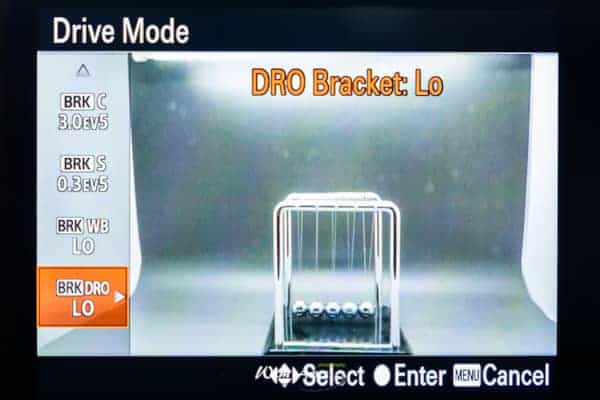
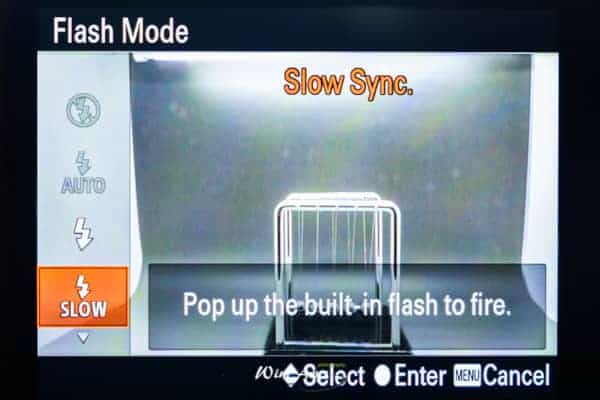
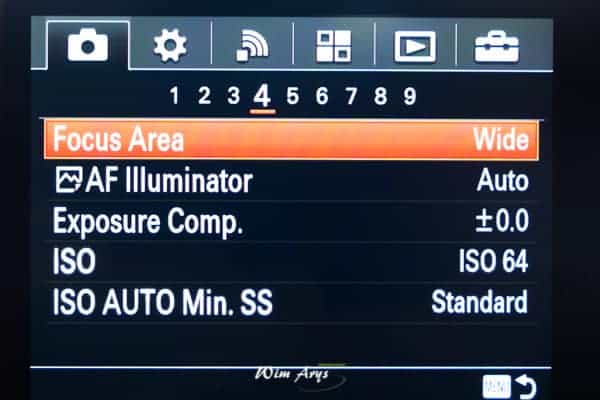

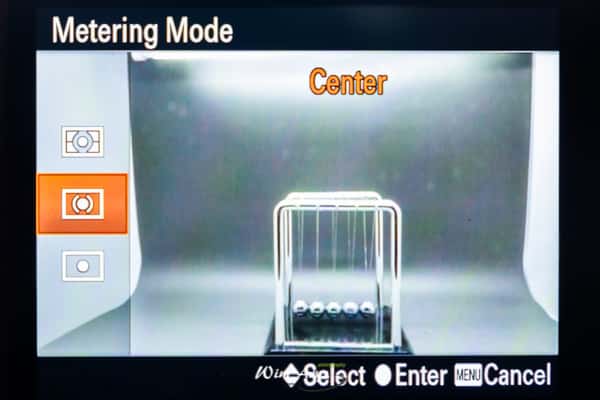
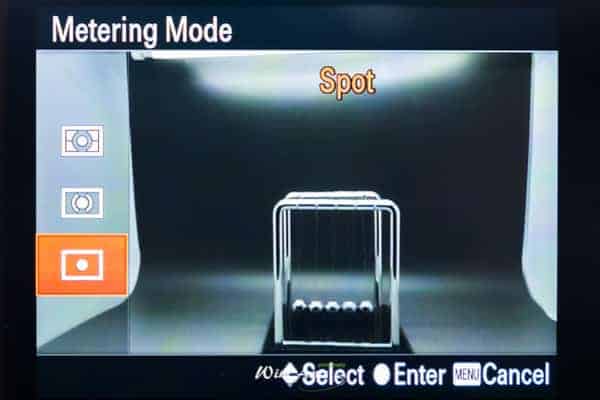
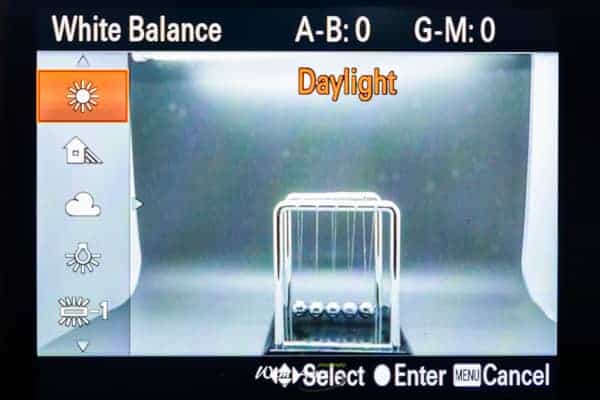
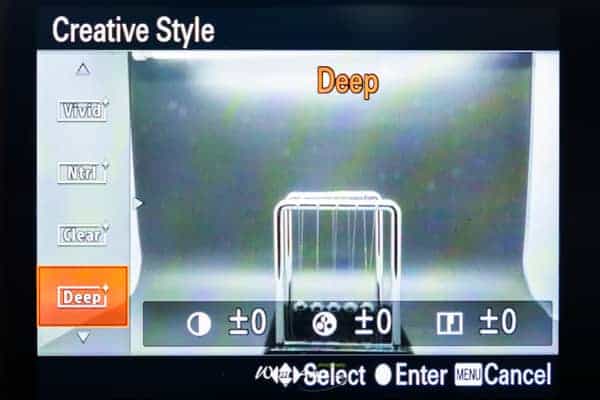
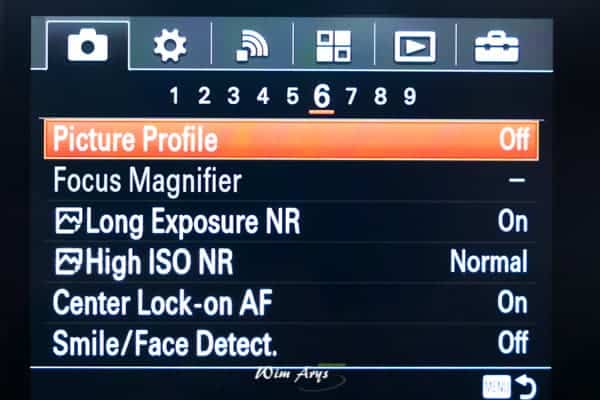
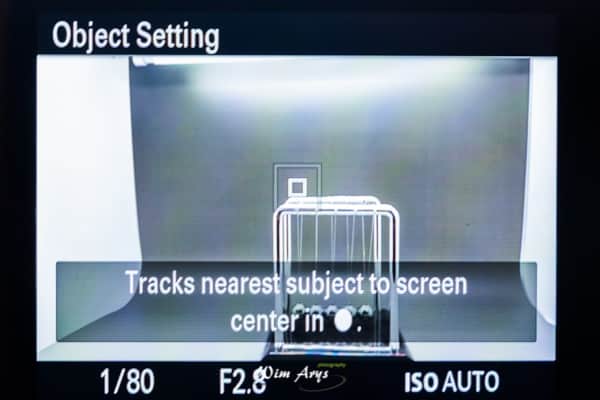
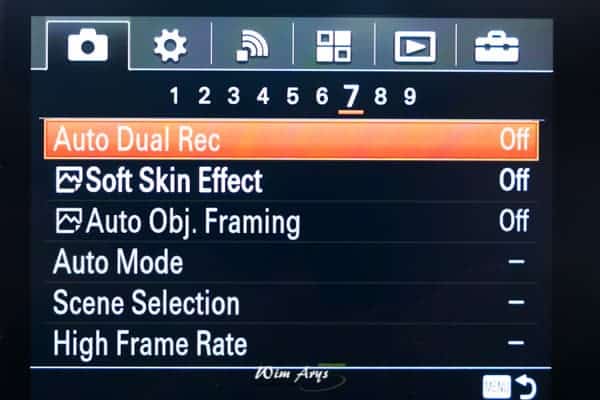
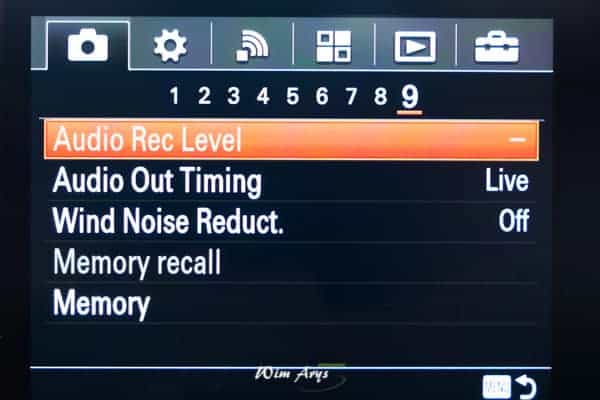
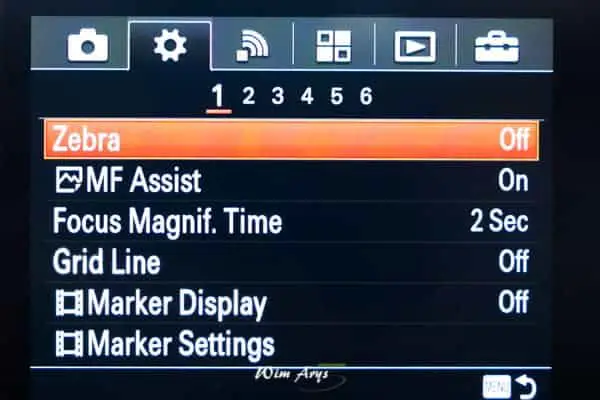
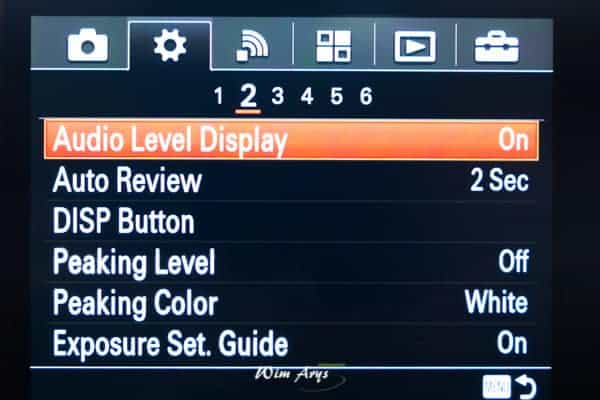
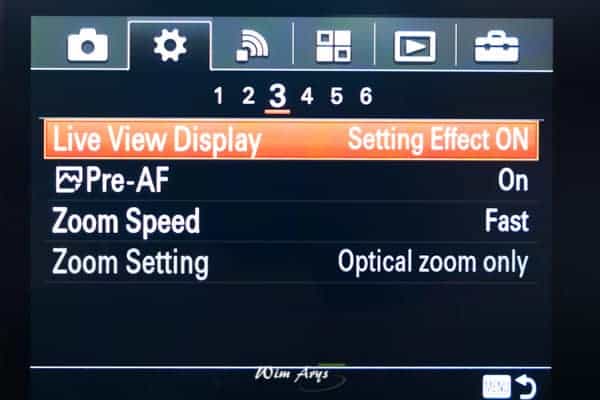
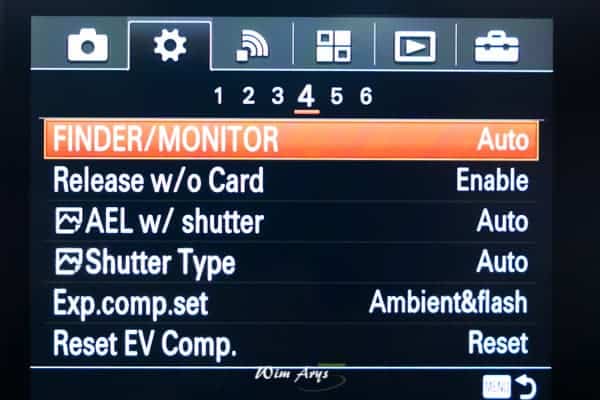
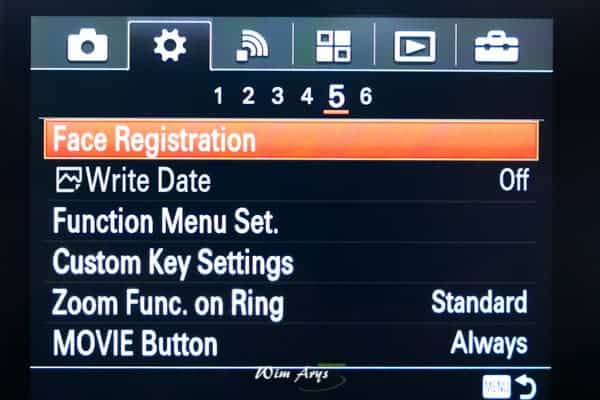
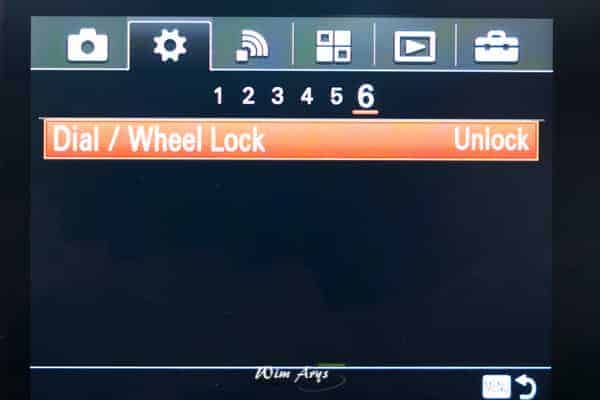
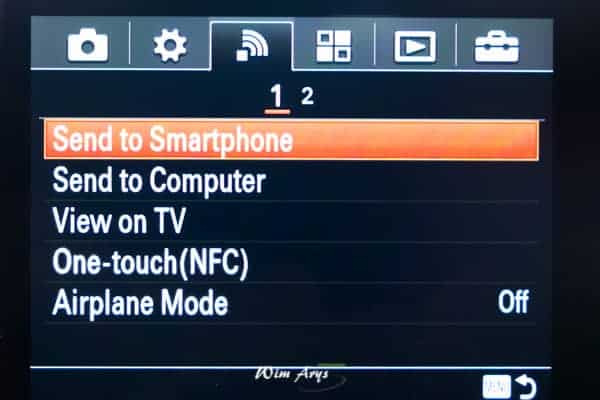
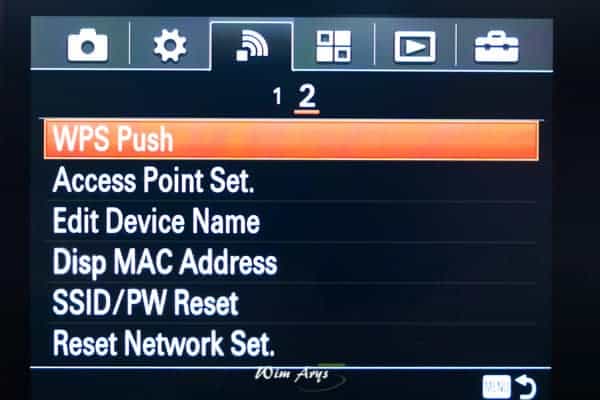
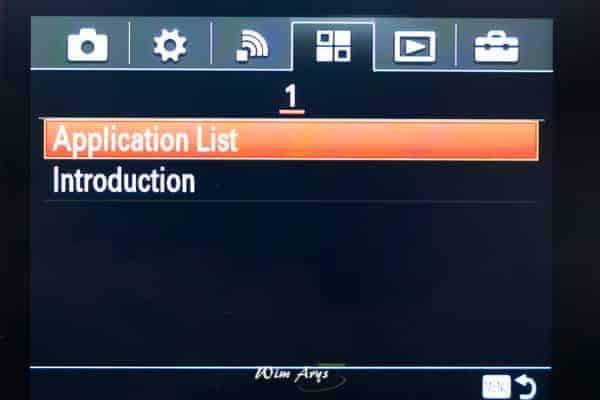
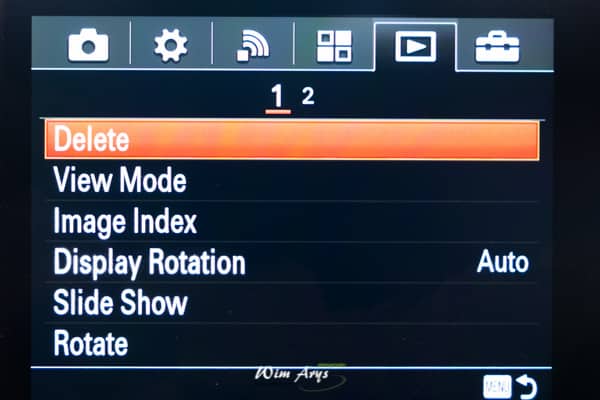
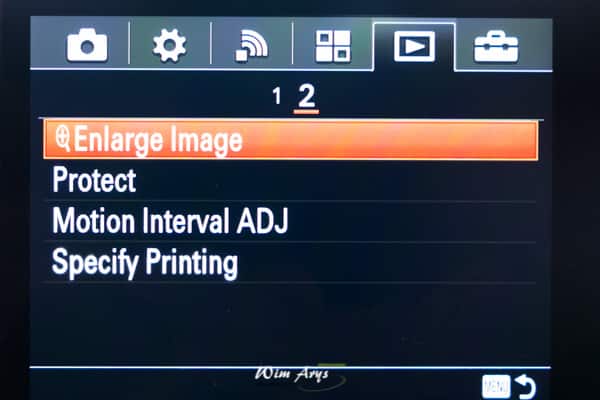
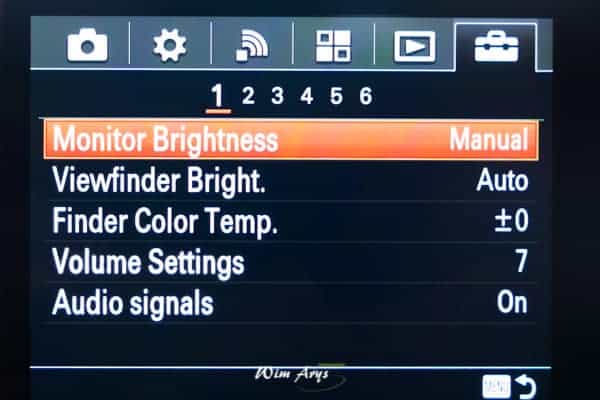
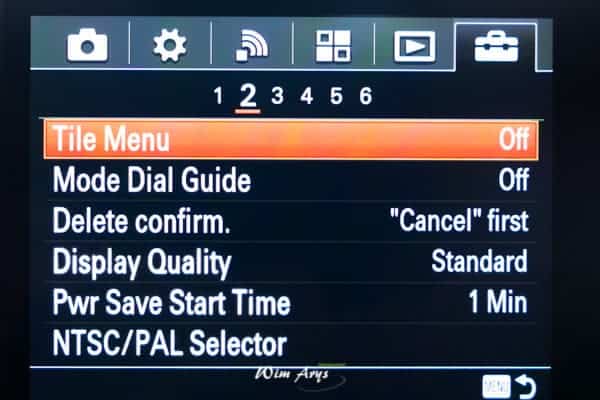
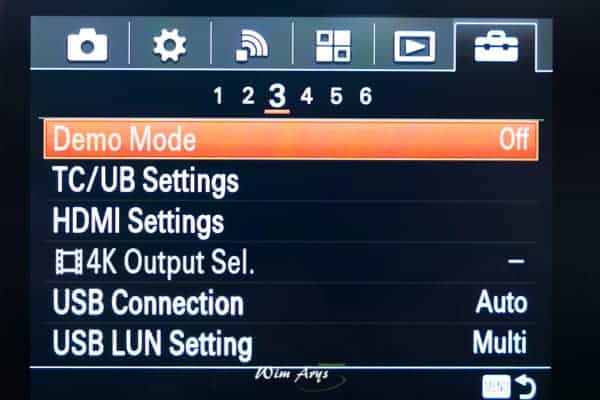
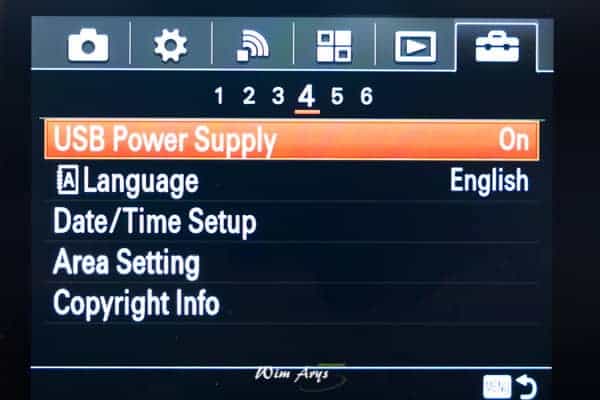
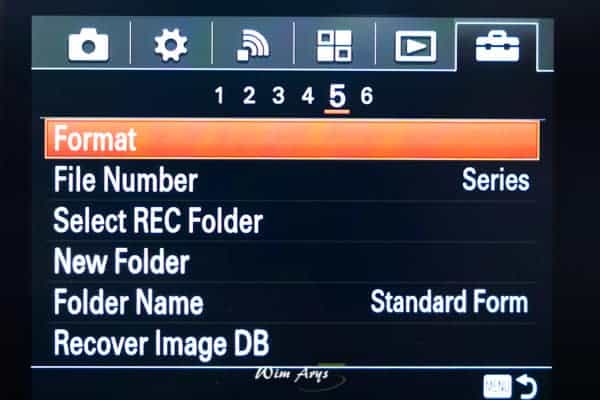
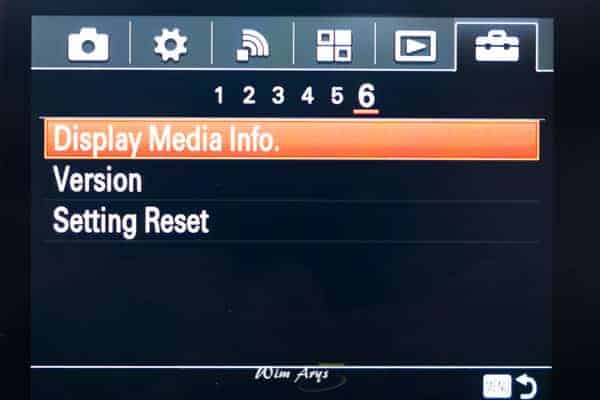
Very informative. Thanks for taking the time to put this together.
Thanks Tim, it’s quite a long tutorial, but there is lots to customise if you want too…
Thanks Tim, There is a lot to take in for a pensioner, I have tried to follow your instructions but somehow I have got black and white when recording don’t know how to get back to normal, Could you help please.
Hi Fran, you have “picture effect” switched on. Find it in the menu and turn it off and you’ll be shooting in colour again 🙂
I cannot see the video on the external video display via micro HDMI. Does this camera not do it?
It should Manni. Have you checked all the settings in-camera?
Yeah, I checked all settings. Perhaps its a manufacturing defect. I will take it to a local store where i bought it from. Hopefully, they’ll be able to check. Thanks.
It turns out that the micro HDMI to regular HDMI cable adaptor was faulty. Put in a new cable and it works now:)
Hi Manni, great to know that everything turned out OK! Enjoy your camera 🙂
Thank you for your efforts with this. I just bought this camera and your guide will make it much easier to hit the ground running.
Excellent Jim, let me know how you get on! Best, Wim
Excellent work on this Wim. I bought the RX10II as an addition to my FF/APSc Sony Mirrorless kit. The only frustrating thing so far is the XAVC S HD slo-motion 240fps vid clips look great in camera but no matter what conversation to Apple (IMovie) software I have tried (even tried AdobePremElements13), none will recognize the files (AVCHD in the Private folder). Any recommendations on editing software or conversion software that will work in am I just missing something ? / cheers David
Fantastic guide to the Sony RX10 II. I’ve had the camera for a month and found your info extremely helpful. I daved your page/site to the home screen of my iPhone and refer to it constantly. Great work.
Thanks Richard, enjoy you camera!
Great Tim! Thanks a lot! Is there a way to magnify picture while shooting the video to check focus? Or even before shooting the video in video mode?
Thx!
Hi Petar, I’m not sure if this is possible. Have you tried turning on focus magnification and setting the duration to a longer time?
Great guide! Bought my RX 10II 3 weeks ago under for 999 EUR (amazon deal). Mainly for video shootings. One question: I couldn’t figure out how to display the focal length?? There must be a way. With my Sony RX100 II it works when using the ring for zooming. Any idea? I can’t believe that it’s not possible…
Hi Mike, well I can’t find any reference in the manual about this either unfortunately.
Thanks for your guide, I have just bought an RX10 so I don’t know much about the setting.
How often do people lose the usb port – where it won’t light up and charge the battery- I have to use an external charger- after 12 months of light use; and do not know if it will even hook up to a computer
Sounds like a hardware problem Terry. Must be very annoying. Is it still under warranty? I would strongly suggest sending it in for repairs if it is!
Hi there, thanks for the post. My RX10 ii does not have Cine4 as a profile?
Cheers
Hi Ryan, I believe you’ll need to upgrade to the Mark 3 for that.
hi Wim – thanks for this; the breakdown and explanation of the options and the additional information is invaluable. I’ve been using an RX10, which is a near-perfect travel camera for me, except for night shooting and it’s sometimes iffy autofocus with moving objects. I just got a used RX10 ii (after finding the RX10 iii too cumbersome) for the improved autofocus and it’s additional features; my original will be my backup now. you’re article has made setting it up not only easy but informative as well.
thank you!
Thanks for your comment Charles, I appreciate that!
Great information Wim. Thank you for sharing. I have two Sony RX 10 ii. I want to synchronize them and to let them shoot video to start and end at same time. Do you have any recommendations? Thank you.
Hi Zhan, the only reliable way is to write Timecode to your video and synchronize in post later. To quote my guide:
“The time code (TC) and the user bit (UB) information can be recorded as data attached to movies.
Possible settings:
TC/UB Disp. Setting: Sets the display for the counter, time code, and user bit.
TC Preset: Sets the time code. UB Preset: Sets the user bit.
TC Format: Sets the recording method for the time code.
TC Run: Sets the count up format for the time code.
TC Make: Sets the recording format for the time code on the recording medium.
UB Time Rec: Sets whether or not to record the time as a user bit.”
Superthanks!!! This is the best diving manual I have ever seen, I just got my Rx10m2 and I falled in love with it. Great job!
No Problem Rafael, enjoy your camera!
Hi,
Is it true that you can only get a slow motion clip for 7 seconds?
If not, what is the maximum time and how do you do it. I have the RX10 Mk4
Cheers
Gary